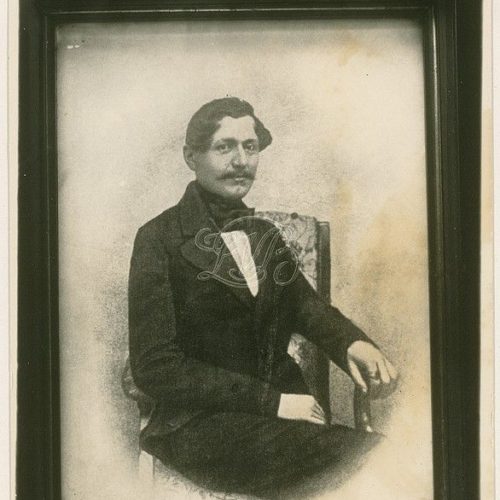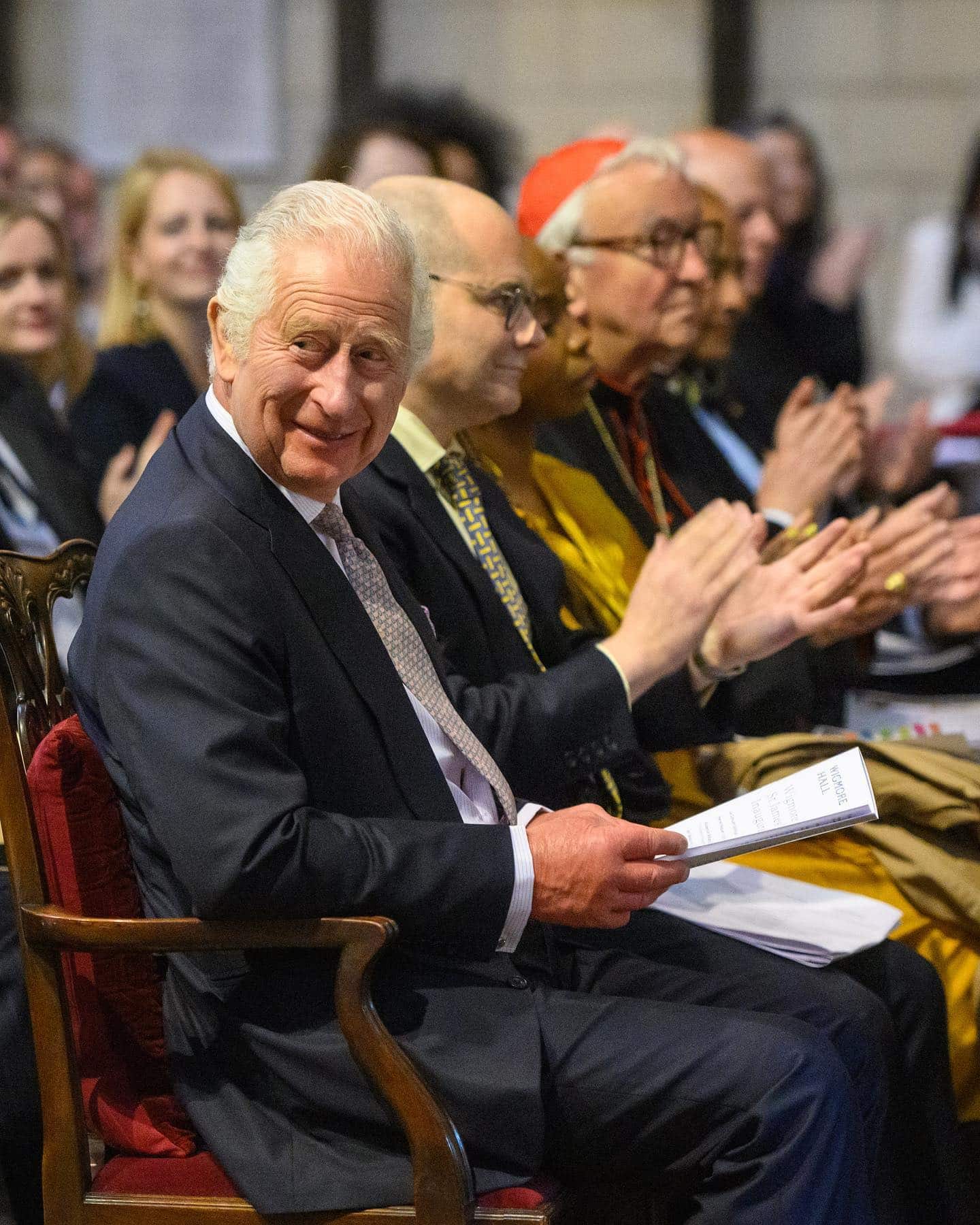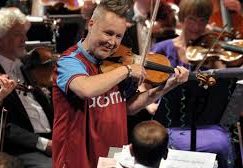The Beethoven sonata that ends at the bottom of the world
mainWelcome to the 74th work in the Slipped Disc/Idagio Beethoven Edition
Sonata for Piano No. 28 in A major op. 101 (1816)
At the peak of his powers, between the ages of 44 and 47, Beethoven composed virtually nothing. Aside from a few small pieces, he produced no work of consequence between the two cello sonatas opus 101 of July 1815 and the shattering Hammerklavier sonata of late 1818. In these three years, his life was consumed by a family crisis of unforseen complications, one that brought him perilously close to mental collapse.
His brother Carl Caspar fell ill and died in November 1815, naming Beethoven as joint guardian of his nine year-old son, Karl, together with the boy’s mother, Johanna. Beethoven mistrusted Johanna, who had a court conviction for stealing from her husband and whom Beethoven denounced, with likely justification, as ‘a depraved person’ and a prostitute. He was determined to remove the child from his mother’s care and raise him to the best of his extremely limited ability.
A more worldly man might have thought of getting married to provide the boy with a surrogate mother and a secure home environment, a solution that would have appealed to the family courts and saved a lot of stress and expense. There was even a willing wife-to-be: the spinster sister of Karl’s headmaster was interested in the boy and his celebrated uncle. But Beethoven had sworn he would only marry for true love and, with his tunnel vision, could focus on nothing other than wresting the boy from his mother by whatever means were available. He filed a suit for sole custody. Johanna counter-sued. The case dragged on for almost four years, involving lawyers, detectives, judges and highly dubious witnesses on either side before Beethoven emerged somehow victorious. Recognising that he was incapable of raising the boy he placed him in a boarding school, leaving instructions that his mother should be denied access. Johanna, unwed, soon gave birth to a daughter and Karl proved a constant source of expense and worry, driving his uncle to a frenzy of despair with a suicide attempt in 1826. He was away on military service when Beethoven died; he later married and had five children, living comfortably on his uncle’s legacy until his death, aged 50, in 1856. Johanna outlived both men, dying in 1869.

In these turbulent years of the custody battle, Beethoven’s s managed just one major work. In the summer of 1816, retreating from the Vienna heat to the nearby spa of Baden, he wrote a piano sonata in his favourite upbeat key of A major, little realising that it was to be the gateway to a run of late sonatas that would end, seven years later with the unimaginable opus 111. We know that could not forsee where this would lead because the opus 101 opens with a rumination so simplistic you might readily mistake it for a lullaby. This is early-middle Beethoven, happy and lucky, confident that the world is absolutely ready for what he alone has to offer. This may be an act of deception or, more likely, self-deception. In order to save himself from the madness of the custody courts Beethoven calms his mind with a reversion to his young manhood. Arthur Schnabel captures this mood to a tee.
It lasts all of four minutes. The opening movement fades to black and we are in the world of Freudian neurosis, everything restless, nothing settled. The middle movement is an uneven, jerky, chaotic, unhappy march in F major, deeply disturbing. There follows a brief adagio and an enigmatic finale in A minor, fiendishly difficult to play and ending at the very bottom of the keyboard, or the world.
It is no exaggeration to state that a good interpretation of this difficult masterpiece requires an appreciation of Beethoven’s Vienna and a philosophic turn of mind. Walter Gieseking, a German pianist of high intelligence, matches Schnabel for empathy, lacking only the final suggestion of sympathy for Beethoven’s deteriorating situation. Wilhelm Kempff, the first to record this sonata in 1925, is disabled by dreadful sound; his post-War DG recordings, beautiful as they are, shroud Beethoven in an excess of reverence. Walter Gieseking (1949) is magisterial in an unpleasant way, like a bad-tempered headmaster.
The Hungarian exile Geza Anda, a leading exponent of Bartokian modernism, adds profound feeling to the adagio and a rebarbatic, near-anarchi edge to the finale. His is certainly an interpretation to swear by; so, inevitably, is his compatriot Annie Fischer, who was Georg Solti’s favourite pianist. Fischer will break your heart in the adagio and kick the pieces around the floor in the finale. Also to be reckoned with is the impenetrably enigmatic Maria Yudina, who is either the greatest Beethoven pianist that ever lived, or a body-double.
It takes a suspension of disbelief to assess these originals beside the industrial pianists of the late 20th century record boom – beside Brendel, Barenboim, Bishop-Kovacevich and all the rest who churned out cycles to deadline, always to a high standard if rarely leaving a single work that stands on its own as their summit achievement. In this sonata, Vladimir Ashkenazy is a singular exception. In his hands, everything makes perfect sense, as it does with Emil Gilels. Maurizio Pollini, too, has much to say about opus 101.
Among 21st century interpretations, the Turkish pianist-composer Fazil Say has a way of capturing contrasts as if they were parallels, managing the internal turmoil with the muted balm of a psychotherapist and an unfailingly elegant phrase.
Dina Ugorskaja, a Russian emigrée in Germany who received scant recognition before her early death of cancer in 2019, conveys, more than anyone, Beethoven’s childish helplessness in a battle he cannot afford to lose. Igor Levit, of similar origin, finds hopelessness in the finale with a faint, redeeming touch of rage. We’ve come a long way in 100 years of recording.







Very interesting story.
The 1st mvt of this wonderful sonata has an incredible way of postponement of giving a key: the music tenderly wanders, floats, hovers, promises, deviates, surprises, and only after a long time gives a stable chord, on which the music fondly and out of sinc weights-in, as if wanting to stay there without any barlines.
I find that most pianists, even Schnabel, play the 1st mvt of this piece too extravertly, and lacking some of the necessary intimate poetry. Richard Goode combines expression with poetry very well:
https://www.youtube.com/watch?v=YMZQ_Lh635w
it is always interesting how events are portrayed to suit a
premise. That Karl attempted suicide can be laid at
Beethoven’s door as can be Beethovens morbid hated of the mother Johanna.
“Unwed she gave birth to a daughter” what in the
world does that prove? To find parallels in a piano sonata
to these life events is a bit much if not ridiculous.No where
is there a reference to current events,it is a piano
sonata by Beethoven and if you didn’t know who wrote the sonata you would have to come up with a new story line.
Less psychobabble and more music making…….
Well, I walked into that one, with the besf intentions. Norman’s gremlin hit me also. the last two cello sonatas are, of ourse, Op. 102. You all knew this. WHY didn’t you tell me?
Sorry. Was elsewhere. However I am telling you that the last movement is not in A minor. Yes there is a fugue in the development that is in that key, but the movement starts, finishes and recapitulates in A major, just as you would expect.
Beethoven was very likely gay, hence his focus on his nephew and also this, at this time, must have added additional stress since homosexuality was frowned on so much then. Unmarried men of his age are pretty much unheard of at that time (the same applied to Handel who solved the situation by moving and “marrying” his butler in London).
Nonsense. With playing-out the role of ‘father’, Beethoven wanted to restore his family fantasy, which he had experienced when young after the early death of his own father. While still immature, he had had to take-on the role of the head of the family, and he tried to recapture that situation later in life when his many attempts at marriage had failed. Also, he must have felt terribly lonely, being deaf and struggling with housekeepers and practical requirements. A family situation would have given him some purpose in his daily life. Of course, he did not have the capacities and the plan failed spectacularly.
Also, before the 19C victorian family structure domination, family life was more loose, people often lived with uncles and aunts in one house, there were always singles around who did not set-up a family but lived with one, or who simply lived alone. Not everybody married or was supposed to. Given that families often had quite many children, this did not endanger the procreation number.
The letter to the ‘unsterbliche Geliebte’ was meant to be sent to a married woman of nobility, who would have lost her children if she had divorced from her husband. Obviously, she could not bring herself to make that sacrifice. Very unlikely that a gay man would have written such letter.
What have been smoking?
Correction:what have you been smoking?
Of the very top composers who ever lived, 3 were gay: Tchaikovsky, Handel and yes, Beethoven. Mozart, Brahms and Bach were unabashedly heterosexuals but the other 3 were not. None of the 3 gays married which in itself was an unusual state for their times. I think this also helps to explain much of the “controlled rage” in Beethoven, including that in his wonderful piano works for he realized this his sexuality was an enormous part of himself that he could not control and which was well beyond the tolerance of society’s at the time. I think it also helps to explain his role as a rebel and an outsider. One cannot leave this important situation out of any discussion of his works.
Part of Beethoven’s “solution” was his nephew; Handel was more ingenious and moved to the U.K.and essentially lived his life hidden with his man servant (to whom he interestingly left most of his possessions)in a large, private house (now a museum that is well worth visiting). This was easier for him because of his wealth and important connections, including to British royalty. Tchaikovsky, tragically, committed suicide.
It was not easy for any of them, and this comes out in their music. The only way they could “lose themselves” was through their wonderful music.
There are more reasons for artists to ‘rebel’ or feel ‘unhappy’ or ‘be in a rage’ than preferring men.
OK, you have my vote for ‘Troll of the Year’. Congratulations! 🙂
I think you make up a lot of fun stories that you wouldn’t dare to posit to Beethoven’s face if given the opportunity. “A rumination so simplistic you might mistake it…” well, YOU might.
Interesting and informative! I also like the early recording of Friedrich Gulda of this Sonata, I think it was made in 1954. And then there’s Richter…
Shockingly, you forgot the greatest Beethoven interpreter that ever lived, Leonard Crint.
Paul Lewis, Roman Rabinovich gave best rendition of # 28 sonata
When I started collecting there were two choices: Schnabel or Gieseking, whom I got because it was in my town’s shop. It suited him as well as it would Egon Petri.
Horowitz took up Op. 101 late; there’s a live recording. He mentioned its difficulty. It was once called “the little Hammerklavier” for use of German in place of Italian terms. The finale’s fughetta did little for his reputation as a contrapuntist, but the big “Hammerklavier” and Grosse Fuge took care of that. Curiously, his last opus is a little fugue for string qurtet, Op. 137, which I don’t get much out of even with score in hand.
My previous post was to correct earlier attempts to send this one.
Horowitz may have only added Op 101 to his programs in the 1960s but it seems that Horowitz did know all the sonatas thoroughly and had already worked through them very early in his career. Knowing how Horowitz made a point of studying whole bodies of repertoire (ie the complete Scarlatti sonatas) before choosing what he would perform, this is eminently believable. My teacher once related to me how Horowitz had sought out Cortot for lessons. Apparently, as the story goes, H’s intention was to find out the secret to Cortot’s legendary double notes in the Etude en forme de Valse. Cortot instead got him working on the 32 Beethoven sonatas and remarked to someone (doubtless with a twinkle in his eye), “I didn’t tell him.”
Dr. Pauls,– You are so unusually knowledgeable about Alfred Cortot that I wonder if your teacher was Thomas Manshardt, one of his last two pupils. I’ve sent a separae post to this thread today about Horowitz and Saint-Saens”s etude.
My teacher was not Manshardt (although he lived not far from where I grew up) but a British pianist named Robin Harrison who emigrated to Canada to take up a professorship in the 1970s. I don’t know if Harrison ever met Cortot, but he was a huge admirer for sure. Possessed of a vast library, he knew Cortot’s recordings intimately (and played some of them for me in my early teens), and had me learn the 24 Etudes from Cortot’s amazing edition. Of course, he also knew the post-war London piano scene very well, and spoke of having heard Cortot live when, pianistically, Cortot was no longer at his best. Harrison noted that despite this, Cortot was still able to play fantastically well on occasion, and in particular mentioned a very good concert Cortot had given of the complete Chopin Etudes and Preludes (all in one go!).
Wonderful story!
Claudio Arrau made at least two great recordings as well.
Glad to see Annie Fischer get a mention.
She was a great artist.
The Idagio link shows presumably that the Ashkenazy recording discussed is from the boxed set containing the complete sonatas recorded 1971-1980, so this would be the 1976 recording. There is a digital remake from 1991. The earlier recording was my “imprint” version as a teenager, my first and unforgettable late-Beethoven experience. After many 101’s, this is still the recording I return to.
By the way, here he is in a live performance from 1983:
https://www.youtube.com/watch?v=t1obWHQANPk
Herbert Pauls — Cortot and Horowitz did indeed interact in Paris around 1926, one immediate cause being Horowitz’s interest in the zany Saint-Saens “Etude en forme de Valse” you mention. Cortot left three phenomenal performances of it, said to resemble Saint-Saens’s own style: 1919 acoustic, 1931 electric, and a piano-roll. The double-notes in the coda are stupendous. He also recorded Saint-Saens’s fourth concerto in what sounds like a smoky bistro, with Charles Muench. Unlike Casadesus, he even gets the notes right in the one-finger theme that introduces the finale.
Georges Cziffra also recordedthe etudet. He and Cortot exchanged letters about it and Schumann, and were photographed together. Recently Francesco Libetta, who referred to them as “my giants”, played a good version on CD and video.
In the end, Horowitz never performed or recorded Saint-Saens’s etude. But he knew. Other works he played in the 30s but gave up were Brahms’s first concerto and Paganini variations,and Liszt’s concertos and “Totntanz”. What we lost from Cortot was “Gaspard de la Nuit”, among others, and Schumann’s great Fantasy, of which he plays a few bar in the master-classes that Murray Perahia edited for Sony.
Vladimir Sofronitzki fthought Cortot the most interesting pianist he heard during his two years in Paris. A good taste, a good time.
I think you and your teacher are right about Horowitz’s surveys of piano literature. He even played swathes of opera by heart, and in Russia had accompanied singers in recital from memory. Wanda brought him Scarlatti and maybe Clementi editions from Italy and he devoured them, to our lasting benefit. Good comment, thank you.
Here is the Cortot 1919 acoustic recording (restored, the noise taken-out):
https://www.youtube.com/watch?v=LXAB8WSzUtY
Another example of Horowitz’s wide-ranging knowledge was when he described to someone (maybe Dubal?) how he had been practicing very hard for his upcoming 50th Anniversary performance of Rachmaninoff’s Third. To that end, he had been playing through his copies of the Rimsky-Korsakov operas and other things along that line. Not the conventional conservatory approach, to say the least!
Amazing….
Herbert Pauls yoou were fortunate in your teacher Robin Harrison; he probably heard Moiseiwitscch also, another pianist of unusual interest. An English friend heard Cortot’s farewell recital the Chopin preludes and etudes and wrote me about them.
I saw Cortot play in December 1952 in aFrankfurt cinema, just back from a Japanese tour where he recorded some works on the program: Chopin Fantasy F minor, second Scherzo B-flat minor, second Sonata “Marche funebre”; interval, Schumann Carnaval and Symphonic Etudes with appendix variation. Encore: Schubert A-flat Impromptu.
I remember some details, such as the second questioning phrase of the cherzo played soft each time, as in the Tokyo recording, Chiarina in Carnaval, &tc. I already knew several of his records, especially Variations symphoniques of franck, the first notes I heard him play.
In 1958 I wrote him; his three-page hand-written letter enclosed an inscribed photo. I was stunned.
He wrote about recording three cycles of Beethoven sonatas, including Op. 101 — back on topic just in timne! Excerpts are on YouTube nd EMI-France’s 2012 commemorative box of his complete recordings for them on the 50th anniversary of his death.
There are miracles among his post-War records despite problems and depredations of age: Op. 55 and Op. 27/1 nocturnes, trois nouvelle etues, posth. prelude in C# minor, valses, the 1953 Symphoni Etudes up to the finale; CCarnaval, Kreisleriana.
Thomas Manshardt and Guthrie Luke were Cortot’s last two private pupils. My English friend visited Luke, who gave him copies of some unpublished things.
There have been recent rleases of Beethoven’s first oncerto (1947 Desarzens, Lausanne Radio) and 1944 Chopin F-minor concerto with Mengelberg/Paris Radio, to join the 1951 Schumannn concerto with Fricsay/RIAS). Besrt wishes and many thanks for your replies.
l
Last night I listened to Murray Perahia’s fSony edition of excerpts from l’Ecole Normale piano master-classes of Alfred Cortot playing and talking,about Sonatas 27, 28, 30, and 31. He makes muchmore of Op.101 than Gieseking did. Tday I’ll read the translation of his remaks and fsee what I was listening to. He’s very free, often slap-dash even considering the setting as illustrative, but powrful and even uncannily expressive and even accurate for his age. No-one els speaks, but there are rustlings, laughter,d and occasional applause.
There are surpriss: Bach’s B-flat Partita, several Mozart sonatas an K. 475 C-minor Fantasia, a handful of Chopin mazurkas, Schumann’s Fantasia.